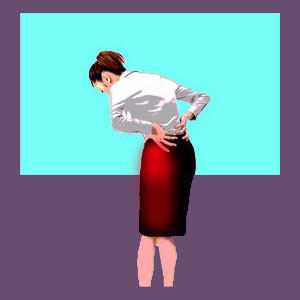
Piriformis scapegoat conditions accept blame for causing pain when they are really non-issues. Many piriformis diagnoses act as scapegoats even though they are innocent and misdiagnosed as the true source of suffering. Scapegoat conditions are responsible for the majority of misdiagnosis in the back and joint pain sectors of medicine. Doctors love to blame pain on atypical structural or functionality, even when there is no evidence of any pathology resulting from said irregularity. Scapegoats represent some of the most dangerous results of improper diagnostic verdicts, since patients will pursue cures for their conditions, often placing themselves at great harm to resolve conditions that are not even symptomatic.
This important article examines scapegoat conditions in the piriformis region. We will explain why scapegoats are blamed for creating pain without any diagnostic merit, as well as how you can minimize your chances of having an innocuous structural or functional atypicality inaccurately blamed as the origin of your pain.
What is a Piriformis Scapegoat?
Scapegoat conditions are certainly not limited to the piriformis muscle. In fact, the medical sector is rife with them, mostly due to the mistakes of Cartesian philosophy. Doctors are taught that atypical structural does not accurately predict pain, yet this ideology seems to disappear when they become licensed and reach private practice. Instead, atypical structure becomes the number 1 reason for the diagnosis of joint and musculoskeletal pain, even in the absence of any semblance of logical pathological process at work.
We are famous for outing many diagnostic scapegoats, including degenerative disc disease, herniated discs, arthritis, spinal curvature, carpal tunnel abnormalities, rotator cuff tears, meniscus tears and spinal stenosis, among many others. This is not to say that these conditions are never painful, since they surely can be. However, it is saying that these conditions are not inherently painful and most cases exist asymptomatically, much in the same manner as most piriformis abnormalities.
So, for the purposes of this essay, a piriformis scapegoat is a structural or functional abnormality that is unfairly and incorrectly blamed as the origin of incidental pain, when the real cause remains unidentified and therefore untreated. It does not take a genius to see the fundamental problem involved in scapegoat conditions, since they clearly sentence patients to unfulfilling therapeutic results and continuing pain, because their true causation is not addressed as long as the patient holds on to the mistaken diagnosis.
Convincing Scapegoats
There are structural and functional types of scapegoats that are often diagnosed in regards to the piriformis muscle. Let’s look at each variety individually for better understanding:
Structural scapegoats involve changes in the normal anatomy of the piriformis muscle or surrounding tissues. In some cases, MRI testing can reveal scarring or signs of past injury to the piriformis muscle. In some cases, this evidence is innocent of creating any pain, but a diagnosis of trauma or RSI might be pronounced nevertheless. However, the most common structural scapegoat involving the piriformis is atypical proximity of the sciatic nerve in relation tot the muscle. In a normal anatomy the sciatic nerve runs beneath the piriformis. However, a significant portion of the general population (around 17%), the sciatic nerve runs through the muscle directly, in front of the muscle or around the muscle in a divided state. This abnormality is not inherently painful or problematic and many diagnoses of piriformis syndrome based simply on sciatic nerve position are incorrect.
Functional abnormality of the piriformis is less convincing, since it can only be diagnosed via extremely subjective diagnostic evaluations, including various tests for range of motion, pain upon movement and over-tension or over-laxity issues. Muscle imbalances fall into this category, as do some other conditions that relate to piriformis function, rather than form.
Tips for Avoiding Misdiagnosis Due to a Piriformis Scapegoat
Our first and most important tip is to always seek diagnosis from a qualified physician and then seek out a second opinion from a different type of physician for best results. Getting multiple diagnostic opinions is one of the best ways of avoiding subjective diagnostic analysis that can doom you to failed treatment before therapy even begins.
Just as important, you must learn about piriformis syndrome and look for holes in any diagnostic therapy you receive. Do not take information at face value without it all making perfect sense to you. If something seems wrong, or if you feel like you are being rushed into whatever type of treatment the care provider conveniently offers without other option, then really consider the logic of the diagnosis more than ever.
Finally, realize that atypical structure does not mean that a tissue is inherently painful. Learn from the collective medical knowledge of our species and do not be tainted by the attitudes of Cartesian-obsessed doctors who are just out for the money. The overwhelming majority of all surgeries geared towards “correcting” anatomical abnormalities (anywhere in the anatomy) are unnecessary. In certain medical specialties, like back pain for example, more than 90% of structural correction surgeries are unnecessary. Learn from these factual statistics and do not become a victim to the profit aspirations of a doctor who feels like their antiquated and incorrect “knowledge” will never be questioned.
Piriformis Pain > Piriformis Diagnosis > Piriformis Scapegoat





